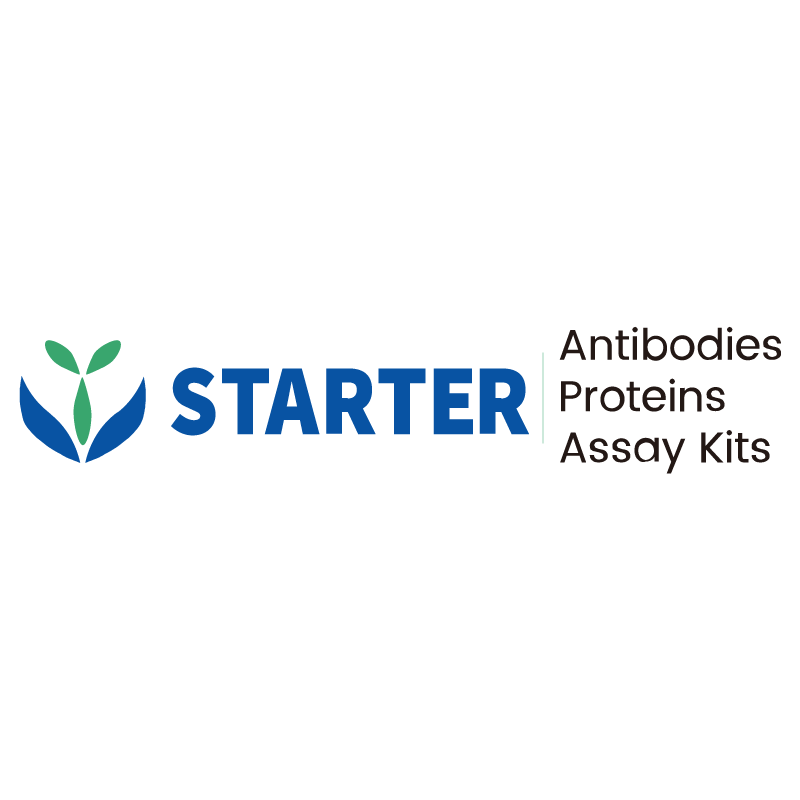WB result of GLS1 Recombinant Rabbit mAb
Primary antibody: GLS1 Recombinant Rabbit mAb at 1/1000 dilution
Lane 1: HeLa whole cell lysate 20 µg
Lane 2: 293T whole cell lysate 20 µg
Lane 3: A549 whole cell lysate 20 µg
Secondary antibody: Goat Anti-rabbit IgG, (H+L), HRP conjugated at 1/10000 dilution
Predicted MW: 73 kDa
Observed MW: 65 kDa
Product Details
Product Details
Product Specification
| Host | Rabbit |
| Antigen | GLS1 |
| Synonyms | Glutaminase kidney isoform, mitochondrial; K-glutaminase; L-glutamine amidohydrolase; KIAA0838; GLS |
| Immunogen | Synthetic Peptide |
| Location | Cytoplasm, Mitochondrion |
| Accession | O94925 |
| Clone Number | S-2355-20 |
| Antibody Type | Recombinant mAb |
| Isotype | IgG |
| Application | WB, IHC-P, ICC |
| Reactivity | Hu |
| Positive Sample | HeLa, 293T, A549 |
| Purification | Protein A |
| Concentration | 0.5 mg/ml |
| Conjugation | Unconjugated |
| Physical Appearance | Liquid |
| Storage Buffer | PBS, 40% Glycerol, 0.05% BSA, 0.03% Proclin 300 |
| Stability & Storage | 12 months from date of receipt / reconstitution, -20 °C as supplied |
Dilution
| application | dilution | species |
| WB | 1:1000-1:2000 | Hu |
| IHC-P | 1:200 | Hu |
| ICC | 1:500 | Hu |
Background
GLS1, or glutaminase 1, is a mitochondrial enzyme that catalyzes the conversion of glutamine to glutamate and ammonia. It plays a crucial role in various physiological and pathological processes. In the central nervous system, GLS1 is essential for synaptic transmission and neurogenesis, as it provides the key excitatory neurotransmitter glutamate. In cancer, GLS1 is often upregulated and promotes tumor cell proliferation, survival, and metastasis by fueling the tricarboxylic acid (TCA) cycle. Additionally, in endothelial cells, GLS1 supports cell proliferation and migration through the regulation of cell cycle progression and reactive oxygen species production.
Picture
Picture
Western Blot
Immunohistochemistry
IHC shows positive staining in paraffin-embedded human liver. Anti-GLS1 antibody was used at 1/200 dilution, followed by a HRP Polymer for Mouse & Rabbit IgG (ready to use). Counterstained with hematoxylin. Heat mediated antigen retrieval with Tris/EDTA buffer pH9.0 was performed before commencing with IHC staining protocol.
IHC shows positive staining in paraffin-embedded human kidney. Anti-GLS1 antibody was used at 1/200 dilution, followed by a HRP Polymer for Mouse & Rabbit IgG (ready to use). Counterstained with hematoxylin. Heat mediated antigen retrieval with Tris/EDTA buffer pH9.0 was performed before commencing with IHC staining protocol.
IHC shows positive staining in paraffin-embedded human colon cancer. Anti-GLS1 antibody was used at 1/200 dilution, followed by a HRP Polymer for Mouse & Rabbit IgG (ready to use). Counterstained with hematoxylin. Heat mediated antigen retrieval with Tris/EDTA buffer pH9.0 was performed before commencing with IHC staining protocol.
IHC shows positive staining in paraffin-embedded human breast cancer. Anti-GLS1 antibody was used at 1/200 dilution, followed by a HRP Polymer for Mouse & Rabbit IgG (ready to use). Counterstained with hematoxylin. Heat mediated antigen retrieval with Tris/EDTA buffer pH9.0 was performed before commencing with IHC staining protocol.
Immunocytochemistry
ICC shows positive staining in A549 cells. Anti- GLS1 antibody was used at 1/500 dilution (Green) and incubated overnight at 4°C. Goat polyclonal Antibody to Rabbit IgG - H&L (Alexa Fluor® 488) was used as secondary antibody at 1/1000 dilution. The cells were fixed with 100% ice-cold methanol and permeabilized with 0.1% PBS-Triton X-100. Nuclei were counterstained with DAPI (Blue). Counterstain with tubulin (Red).


